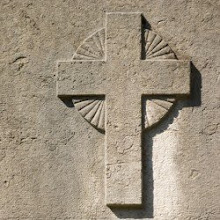1 Our churches teach that one holy Church is to remain forever. The Church is the congregation of saints [Psalm 149:1] in which the Gospel is purely taught and the Sacraments are correctly administered. 2 For the true unity of the Church it is enough to agree about the doctrine of the Gospel and the administration of the Sacraments. 3 It is not necessary that human traditions, that is, rites or ceremonies instituted by men, should be the same everywhere. 4 As Paul says, “One Lord, one faith, one baptism, one God and Father of all” (Ephesians 4:5–6).Our daughter asked a good question. If the Church exists where the Gospel is purely taught and the Sacraments are correctly administered, what about where the Gospel isn’t purely taught, or the Sacraments aren’t correctly administered? Are those people outside the Church, and therefore not saved? Dr. C.F.W. Walther answers her question very nicely in Thesis XI of his essay The Evangelical Lutheran Church the True Visible Church of God on Earth, this portion delivered to the 12th Eastern District Convention in 1867.
Here’s Walther’s answer:
…You will find the true church wherever the Word of God is being used (im Schwange geht). Also among the sects the distinguishing marks [that tell us] whether and that there still exists a church, a band of believers, are not their heresies, but the remaining essential pieces of the pure Word of God. In other words, the pure Word always remains the distinguishing mark of the church, of all believers.
Question:We can rejoice that there are Christians outside of our own communion, and at the same time long for the day when we will all be united in faith and doctrine, gathered before the Lamb in the midst of the throne.
Is the church really mutilated among the sects, because they do not teach the Word of God in all its truth and purity?
Answer:
No, not the church but only the marks of the church are mutilated.
Objection:
But Art. VII says nothing about the church still existing where the Word of God is only partially proclaimed, but not in all its truth and purity!
Response:
A definition attempts to describe a thing the way it should be; that is also how the church is here described, according to its ideal condition, as it should be; but that is not to say that the church no longer exists where these distinctive marks are not present in all their pristine clarity and purity. For example, if you were to describe a human being according to the ideal state, you would say something like this: “Man is a physical-spiritual creature, capable of making rational judgments.” That is a description of man as he should be. But thereby we do not deny that also someone who is incapable of making rational judgments, or one who has not yet fully developed this capability (e.g., a child), is also a human being. It would be absurd to say: “A human being is a physical-spiritual creature which is occasionally unable to make rational judgments, or which occasionally has only one leg or one arm.” It would have been equally absurd if our forefathers had described the church as follows: “The church is present wherever the Word of God is not preached in all of its truth and purity.” In addition to that, the following Art. VIII of the Augsburg Confession already makes it clear that the church is not always as perfect as it is ideally described in Art. VII. (Italics are Walther’s emphasis; brackets were added by the editor.) C.F.W. Walther, Essays for the Church, Vol. 1 (St. Louis: CPH, 1992) 151.






No comments:
Post a Comment